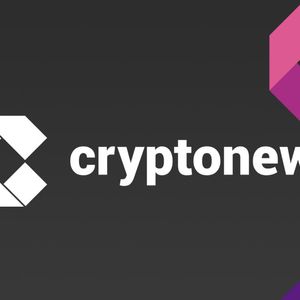Market Pulse
The decentralized finance (DeFi) sector has once again demonstrated its formidable growth and resilience, with decentralized exchanges (DEXs) collectively processing an astounding $1.3 trillion in trading volume during the third quarter of {current_date_year}. This significant surge underscores the increasing mainstream adoption of peer-to-peer trading solutions and highlights a maturing ecosystem that continues to attract both retail and institutional participants. As the crypto landscape evolves, DEXs are carving out an undeniable niche, challenging traditional financial paradigms and centralizing entities.
Q3’s Unprecedented DEX Surge
The latest market reports reveal a staggering $1.3 trillion in trading activity across decentralized exchanges in Q3, a testament to the sector’s vibrant liquidity and growing user base. This figure not only represents a substantial quarter-over-quarter increase but also signals a broader shift in how users interact with digital assets. The volume indicates a robust appetite for permissionless trading, where users maintain full custody of their funds, bypassing intermediaries.
- Total Q3 Volume: $1.3 Trillion across all DEXs.
- Growth Trend: Consistent upward trajectory, reflecting increased trust and technological advancements.
- User Empowerment: Emphasis on self-custody and transparent, on-chain transactions.
Key Drivers Behind the Growth
Several factors have contributed to this remarkable expansion. Enhanced user interfaces, reduced transaction fees on various chains, and a continuous stream of innovative DeFi products have made DEXs more accessible and appealing. The increasing sophistication of liquidity protocols, coupled with the allure of yield farming and arbitrage opportunities, has also drawn significant capital into these platforms.
Moreover, the inherent advantages of decentralized trading – such as censorship resistance, global accessibility, and often a wider array of listed tokens – resonate strongly with a diverse user base looking for alternatives to traditional centralized exchanges.
Binance Smart Chain and Solana Lead the Charge
While the entire DEX landscape has flourished, specific blockchain networks have played pivotal roles in facilitating this monumental trading volume. Binance Smart Chain (BSC) and Solana have emerged as frontrunners, providing the scalable and cost-effective infrastructure necessary to handle high transaction throughput.
- Binance Smart Chain (BSC): Known for its EVM compatibility, lower gas fees, and high transaction speeds, BSC has continued to be a hub for numerous popular DEXs, attracting users seeking efficiency and a familiar development environment.
- Solana: Leveraging its ultra-fast transaction finality and remarkably low costs, Solana’s ecosystem has seen exponential growth in DEX activity. Its innovative architecture supports high-frequency trading, making it a favorite for both automated market makers (AMMs) and professional traders.
- Ecosystem Diversity: Both chains boast a rich array of decentralized applications, driving liquidity and user engagement across their respective DEXs.
The Evolving Landscape of DeFi
The surge in DEX trading volume points to a significant maturation within the broader DeFi ecosystem. What was once considered a niche, experimental corner of crypto has now become a foundational pillar. This growth also intensifies the competition with centralized exchanges, pushing both models to innovate further in terms of security, user experience, and regulatory compliance.
The continued development of cross-chain interoperability solutions and layer-2 scaling technologies promises to further enhance the capabilities of DEXs, potentially unlocking even greater liquidity and a seamless trading experience across different blockchain networks in the coming quarters.
Challenges and Future Outlook
Despite the impressive growth, the DEX sector is not without its challenges. Regulatory clarity remains a key concern, with jurisdictions worldwide grappling with how to classify and oversee decentralized protocols. Security vulnerabilities, although improving, still pose risks, as evidenced by occasional exploits. Furthermore, educating new users on the nuances of self-custody and decentralized trading is crucial for sustained mainstream adoption.
Looking ahead, the trajectory for DEXs appears bullish. With ongoing innovation in areas like capital efficiency, advanced trading features, and improved risk management tools, decentralized exchanges are poised to play an increasingly central role in the future of finance, cementing their status as a cornerstone of the digital economy.
Conclusion
The $1.3 trillion in DEX trading volume during Q3 {current_date_year} is a powerful indicator of the decentralized finance sector’s robust health and accelerating maturity. Led by high-performance blockchains like Binance Smart Chain and Solana, DEXs are demonstrating their capacity to handle significant liquidity and meet the demands of a rapidly expanding global user base. While challenges pertaining to regulation and security persist, the fundamental advantages of decentralized trading ensure its continued evolution and vital role in shaping the financial landscape of tomorrow.
Pros (Bullish Points)
- Demonstrates increasing user confidence and adoption of decentralized trading solutions.
- Highlights the growing maturity and resilience of the DeFi ecosystem, attracting more capital and innovation.
- Indicates successful scaling and efficiency improvements on leading blockchain networks like BSC and Solana.
Cons (Bearish Points)
- The rapid growth could attract increased regulatory scrutiny, potentially leading to tighter controls.
- While improving, security vulnerabilities and exploits remain a concern for decentralized platforms.
- Competition from centralized exchanges and the need for user education on self-custody persist as hurdles.



